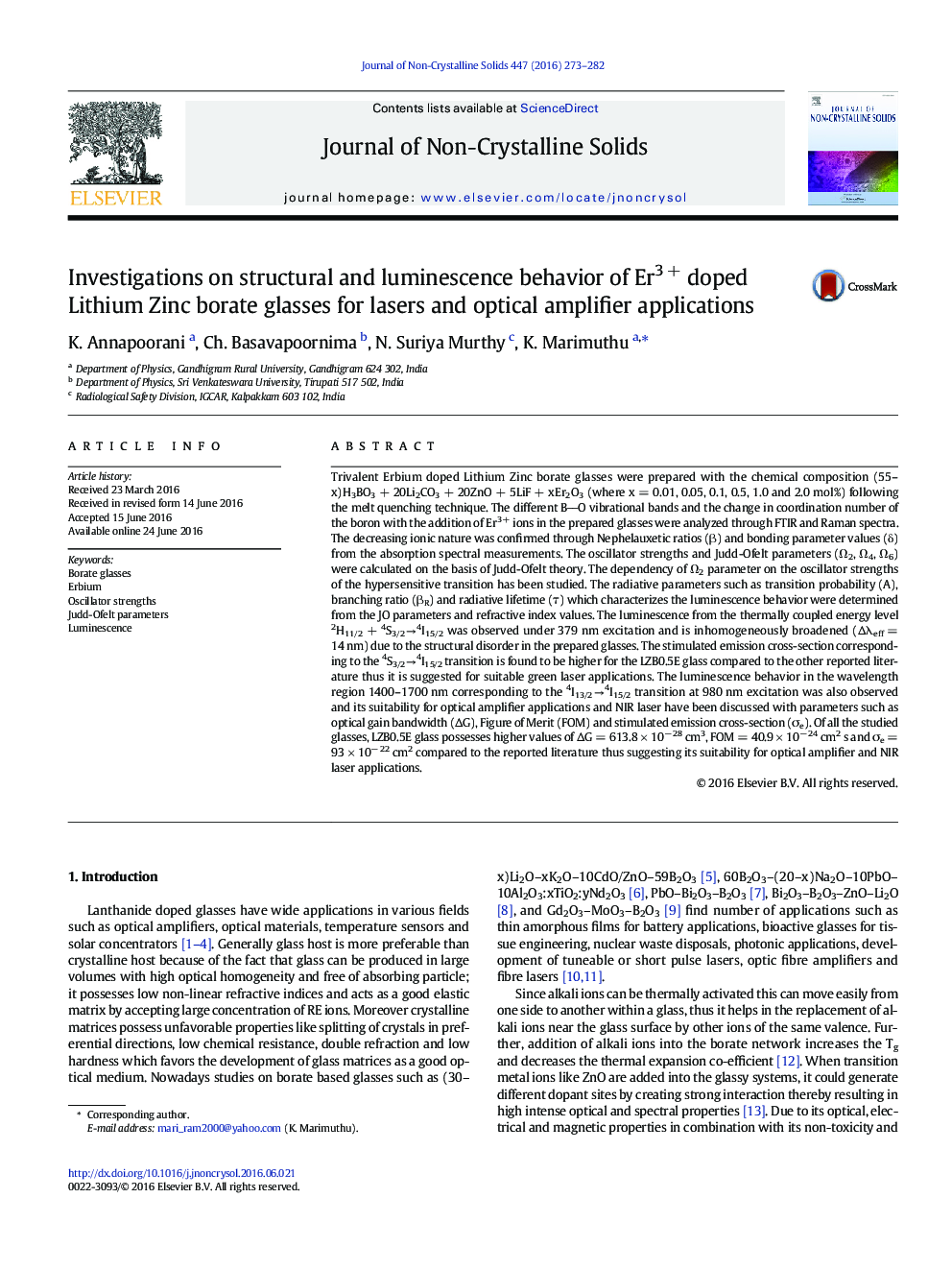| Article ID | Journal | Published Year | Pages | File Type |
|---|---|---|---|---|
| 1480176 | Journal of Non-Crystalline Solids | 2016 | 10 Pages |
•The decreasing ionic nature in the prepared glasses was confirmed from β and δ values.•LZB0.5E possesses higher σe value compared to other reported glasses.•The inhomogeneous broadening of 4I13/2 →4I15/2 was due to variation of Er3 + ion sites.•σe of 4I13/2 →4I15/2 determined by McCumber theory is comparable with F–L theory.•LZB0.5E possesses high ΔG, FOM and G values compared to other reported literature.
Trivalent Erbium doped Lithium Zinc borate glasses were prepared with the chemical composition (55–x)H3BO3 + 20Li2CO3 + 20ZnO + 5LiF + xEr2O3 (where x = 0.01, 0.05, 0.1, 0.5, 1.0 and 2.0 mol%) following the melt quenching technique. The different BO vibrational bands and the change in coordination number of the boron with the addition of Er3 + ions in the prepared glasses were analyzed through FTIR and Raman spectra. The decreasing ionic nature was confirmed through Nephelauxetic ratios (β) and bonding parameter values (δ) from the absorption spectral measurements. The oscillator strengths and Judd-Ofelt parameters (Ω2, Ω4, Ω6) were calculated on the basis of Judd-Ofelt theory. The dependency of Ω2 parameter on the oscillator strengths of the hypersensitive transition has been studied. The radiative parameters such as transition probability (A), branching ratio (βR) and radiative lifetime (τ) which characterizes the luminescence behavior were determined from the JO parameters and refractive index values. The luminescence from the thermally coupled energy level 2H11/2 + 4S3/2 →4I15/2 was observed under 379 nm excitation and is inhomogeneously broadened (Δλeff = 14 nm) due to the structural disorder in the prepared glasses. The stimulated emission cross-section corresponding to the 4S3/2 →4I15/2 transition is found to be higher for the LZB0.5E glass compared to the other reported literature thus it is suggested for suitable green laser applications. The luminescence behavior in the wavelength region 1400–1700 nm corresponding to the 4I13/2 →4I15/2 transition at 980 nm excitation was also observed and its suitability for optical amplifier applications and NIR laser have been discussed with parameters such as optical gain bandwidth (ΔG), Figure of Merit (FOM) and stimulated emission cross-section (σe). Of all the studied glasses, LZB0.5E glass possesses higher values of ΔG = 613.8 × 10− 28 cm3, FOM = 40.9 × 10− 24 cm2 s and σe = 93 × 10− 22 cm2 compared to the reported literature thus suggesting its suitability for optical amplifier and NIR laser applications.
Graphical abstractFigure optionsDownload full-size imageDownload as PowerPoint slide
